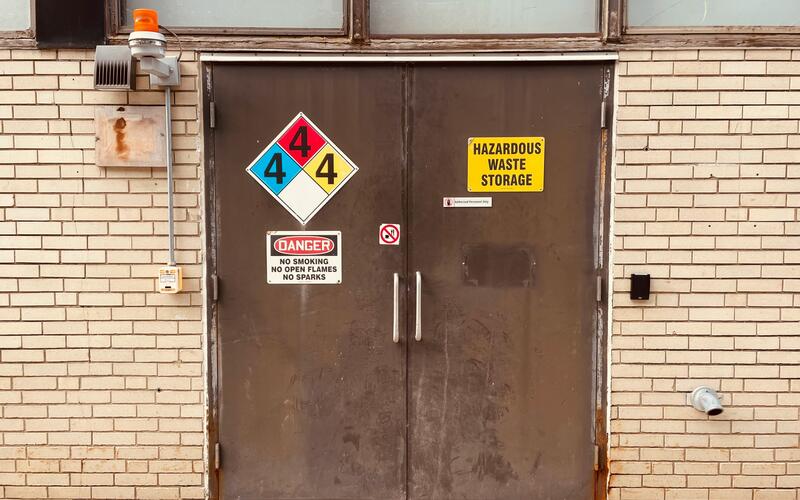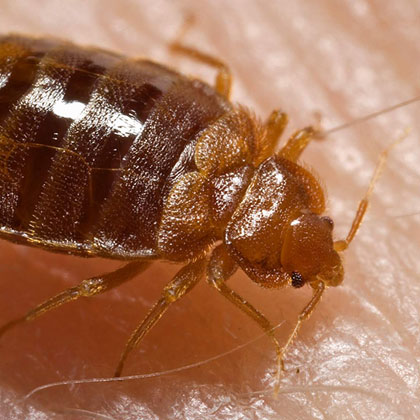Chem-undrum: The Need to Better Monitor Chemicals Compounds in the U.S.

Chem-undrum: The Need to Better Monitor Chemicals Compounds in the U.S.
In a world where warnings of "Cancer and reproductive harm" adorn everyday products, the burden of identifying hazardous substances lies with the consumer. The prevalence of hazardous chemical compounds, with alarming rates found in pregnant women, paints a concerning picture of a silent epidemic affecting the health of future generations. As chemical interference in the body's hormones correlates with rising rates of cancer, obesity, and neurological disorders in children, the need for a fundamental shift in who monitors chemical compounds becomes apparent.
Buckley, J. P., Kuiper, J. R., Bennett, D. H., Barrett, E. S., Bastain, T., Breton, C. V., … & Woodruff, T. J. (2022). Exposure to Contemporary and emerging chemicals in commerce among pregnant women in the united states: the Environmental influences on Child Health Outcome (ECHO) program. Environmental science & technology, 56(10), 6560-6573.
Ghosh, A., Tripathy, A., & Ghosh, D. (2022, March). Impact of endocrine disrupting chemicals (EDCs) on reproductive health of human. In Proceedings of the zoological society (Vol. 75, No. 1, pp. 16-30). New Delhi: Springer India.
Lai, A., Clark, A. M., Escher, B. I., Fernandez, M., McEwen, L. R., Tian, Z., … & Schymanski, E. L. (2022). The next frontier of environmental unknowns: substances of unknown or variable composition, complex reaction products, or biological materials (Hazardous chemical compounds). Environmental Science & Technology, 56(12), 7448-7466.
Santi Lepe was my friend. I had the privilege of laughing alongside him as he grew up, never imagining cancer would take him away at the age of 16. Losing him is the most profound grief I have ever known, an ache I will likely carry for the rest of my life. This heartbreak made me indignant towards the insufficient labeling standards held in the US that allow toxic substances to exist in every-day household products. These substances have harmed human life, especially children’s’ and still, the U.S. tolerates lax toxicity labeling standards. It can no longer be sufficient for a label simply to indicate potential for “cancer and reproductive harm.” Instead, the complete removal of harmful chemicals from everyday products is necessary to adequately protect human health and safety.
Currently, the chemical industry uses a self-reporting system to inform the U.S. government of the creation of new chemical substances. By allowing the chemical industry to operate under a self-reporting system, policymakers place the burden of identifying hazardous substances in the hands of product consumers. The public then holds the daunting task of checking every label for harmful substances. This lack of industry oversite makes the public vulnerable to missed negative health impacts of hazardous chemical compounds remaining in reviewed products. A better way forward exists. Policy changes that push for higher standards of chemical compound monitoring and stricter regulation could make products safer for consumers. If safety decisions are appropriately redirected to the design stage of chemical production rather than the distribution stage, the public will not be burdened with locating chemical substances that carry adverse health effects. The responsibility for detecting toxicity in products will instead rightfully fall on producers who hold greater knowledge of the risks of these substances.
In young generations, adverse health effects from hazardous chemical compounds are a silent epidemic. These compounds persist in our environment, creating a never-before-seen deterioration in children’s health in the U.S. This pattern has emerged because many chemical compounds can mimic or interfere with the body’s hormones. Since chemical companies are usually the only ones aware of the components of chemical compounds, the potential health effects of the compounds tend to remain unknown to the public. However, what information does exist on hazardous chemical compounds should sound alarms.
In a 2022 study, almost 200 pregnant women in the United States and Puerto Rico were monitored for 89 hazardous chemical compounds. Food, water, air, and dust expose can consumers to toxic compounds in everyday household items like personal care products. Researchers found that more than half of the study’s participants had at least 36 compounds in their system. Surprisingly, in over 90% of participants, 5 hazardous chemical compounds were found beyond the 89 targeted by the study. The study also revealed that women of color are more likely to have higher concentrations of chemical compounds in their systems. Differences in consumer product use and diet across different ethnicities and races can help explain this reality. Women of color tend to have access to consumer products and food with higher rates of hazardous chemical compounds. These findings suggest a high prevalence of dangerous, unnecessary chemicals in pregnant women’s environments that could negatively impact the health of future generations.
The study focused on two hazardous chemical compounds that seriously threaten human health: Polycyclic Aromatic Hydrocarbons (PAHs) and organophosphate esters (OPEs). Polycyclic Aromatic Hydrocarbons come from coal, crude oil, and gasoline. OPEs commonly exist as flame retardants in everyday items such as couches and as plastic in food packaging. Overusing these chemicals in simple products constantly exposes individuals to hazardous chemicals, such as PAHs and OPEs. A simple act like sitting on a couch, for example, causes OPEs to seep into the air. Even some coffee we consume includes PAHs.
The interference of hazardous chemical compounds with human hormones also helps explain the higher rates of cancer and obesity in younger generations. Hazardous chemical compounds alter appetite, the body’s conversion of food into energy, and energy levels, increasing the likelihood of obesity. Furthermore, increased exposure to toxic substances amplifies the chances that a cancerous substance will defeat the body’s immune system. Everyday exposure to hazardous chemical compounds interfering with the body’s hormones also makes neurological disorders more common in children. These disorders include a staggering number of quality-of-life changes such as Attention Deficit Hyperactivity Disorder (ADHD), Autism Spectrum Disorder (ASD), mood disorders, learning disabilities, depression, executive function deficits, conduct disorders, impaired neurodevelopment, attention problems, low IQ levels, memory failure, and disturbances in motor skills including attempts to read and write. Exposure to these substances especially impacts developmental and behavioral patterns in children. For example, some children respond slower when answering questions in class and playing with their peers. Others need help to do well in school or dedicate additional time to reach their peers’ achievement levels.
Avoiding these chemicals may feel impossible and overwhelming as the burden of staying safe lies with the public. Instead, the responsibility should lie on the government, given the broad size of the issue and the government’s capacity for addressing an issue of this scope. Increasing the government’s capacity would also help to regulate hazardous chemical compounds. In rethinking the United States approach to chemical monitoring, instead of maintaining its reactive approach of using policy only to respond to chemical crises, the United States needs to implement and uphold a preventative approach to chemical use that implements policies to prevent chemical crises and keep the public safe. Such a responsibility for chemical regulation falls upon the Environmental Protection Agency (EPA), which monitors and regulates hazardous chemical compounds in the United States and houses the country’s current infrastructure for tracking and banning harmful chemicals through the Toxic Substances Control Act (TSCA) Chemical Substance Inventory. The TSCA Chemical Substance Inventory
A preventative approach should include stronger regulations for hazardous chemical compounds with unknown or variable chemical composition. In the United States, official listings of compounds have over 81% of chemical compounds that lack representation by a unique structure or molecular formula. The structure and molecular formulas of hazardous chemical compounds allow researchers to identify potential risks from compound chemicals as their contents become understood and testable.
Substance naming is one of the most common forms of registration for hazardous chemical compounds in the U.S. These names, however, rarely disclose information on the chemical compounds’ structure or production processes, an ambiguity which leaves gaps in the understanding of the compounds’ components and makes it harder to track potential environmental and health threats they may pose.
The information gap has also led to systemic confusion and inaccuracies across the various chemical registration databases. Persistent issues across databases include:
- Different chemical compounds are registered under the same chemical compound name and registration number.
- The incorrect removal of chemical compounds from databases.
- The false identification of certain chemical compounds as nonharmful substances.
Listing chemical compounds through an algorithmic and peer-reviewed system modeled after the European Chemicals Agency Database could help create the foundation for a checks and balance system for reviewing chemical products.
The European Chemicals Agency Database ensures trained professionals evaluate chemical compounds’ classification. Evaluations can occur through literature reviews that identify unknown and variable compositions, biological materials, and reaction processes for each chemical compound. Categorizing chemical compounds in a way that prioritizes the most accurate, non-ambiguous, and machine-readable classifications of chemical compounds remains the current best practice. Public members would more easily identify chemical compounds if pursued, and database systems could classify chemical compounds more appropriately. A public-facing approach represents one of several possible frameworks that could better name and identify hazardous chemical compounds.
Outside of adequately naming and describing chemical compounds, several mechanisms exist to assess how hazardous chemical compounds accumulate, persist, and bring toxic substances into the human body. Assessment mechanisms include whole substance naming, the known constituent approach, and fraction profiling. The entire substance can undergo testing for hazardous effects through the full substance approach assessment, which puts the fundamental substance under testing and evaluation for dangerous effects. The known constituent approach isolates known components of chemical compounds and models worst-case scenarios. Lastly, a fraction profiling approach splits the whole substance into various components of groups. Professionals can then break these groups into smaller pieces and evaluate them for their known composing substances. Each process helps assess the compositions of hazardous chemical compounds at the various levels of substance disclosure.
Understanding what is in compound chemicals and how prevalently these products are in everyday use is essential for the health of future generations. The models discussed provide insight into some ways regulatory agencies can better track public health risks presented by hazardous chemical compounds. Given the fundamental knowledge gaps around dangerous chemical compounds, tracking hazardous chemical compounds is essential for better understanding how they can affect human and environmental health. Tracking their prevalence in society may help determine possible hazards posed by chemical compounds. The status quo of using the public as a real-life test subject for hazardous chemical compounds’ potential harms must end. Instead, we should focus on understanding the health risks a chemical compound could pose before releasing it into the environment through consumer products. In doing so, we can protect the quality of life of our loved ones and prevent their loss so that loved ones like my friend Santi Lepe can have whole and long lives laughing alongside us.




